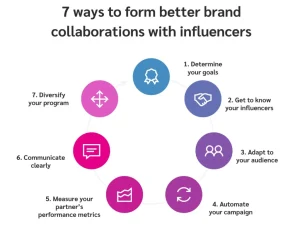Micro-influencer collaboration frameworks for local businesses

Let’s be honest. As a local business owner, the word “influencer” might conjure images of celebrities on private jets hawking detox tea. It feels distant, expensive, and frankly, a little out of touch for a community-focused shop, restaurant, or service.
But here’s the deal: the real magic for local brands isn’t found with the mega-influencers. It’s with the micro-influencer. These are the folks in your own backyard with 1,000 to 10,000 fiercely loyal followers. They’re the trusted neighborhood foodie, the local fashion guru, the go-to source for family-friendly activities. Their audience isn’t a faceless crowd; it’s your potential next-door customers.
The trick, then, isn’t just finding them. It’s building a collaboration framework that works for both of you. A real, mutually beneficial partnership. Let’s dive into how you can structure that.
Why a framework? Why not just send a free product?
Sure, you can just offer a free meal or a product sample and hope for the best. But hope is not a strategy. Without a clear structure, you get inconsistent content, muddled messaging, and a relationship that fizzles out after one post. A framework turns a one-off transaction into a strategic partnership. It sets expectations, defines success, and builds a foundation you can replicate again and again.
The core pillars of your micro-influencer framework
Think of your framework as a simple recipe. You need the right ingredients, mixed in the right order, to create something delicious and effective.
1. Discovery & Vetting: Finding the right fit
Don’t just look at follower count. You’re looking for alignment. A perfect micro-influencer collaboration for a local boutique isn’t about huge numbers; it’s about shared values and a relevant audience.
How to find them:
- Geotag & Hashtag Stalking: Search for your city’s location tag and local hashtags (e.g., #SeattleEats, #AustinVibes). See who’s consistently creating great content about similar businesses.
- Look at Your Own Followers: You might already have micro-influencers following you! Check out who tags you or engages with your content regularly.
- Engagement Over Everything: Scan their comments. Are they genuine conversations? Do they answer questions? A 2,000-follower account with 150 likes and 20 comments per post is far more valuable than a 15,000-follower account with 50 likes and two comments.
2. The Outreach: Making the ask
This is where so many businesses get it wrong. A cold, copy-pasted DM is easy to ignore. Your outreach should be warm, personal, and show you’ve actually done your homework.
Mention a specific post of theirs you loved. Explain why you think they, in particular, are a great fit for your brand. Be clear that you’re offering a collaboration, not just a freebie. This initial touchpoint sets the tone for the entire relationship.
3. The Agreement: Setting crystal-clear expectations
This doesn’t need to be a 20-page legal contract. But a simple, one-page agreement prevents misunderstandings. It should outline the deliverables, the timeline, and the compensation. This is the heart of your micro-influencer marketing strategy.
| Deliverables | Timeline | Compensation |
| e.g., 3 Instagram Feed Posts + 5 Stories | Content to be posted between [Date] and [Date] | e.g., $150 + product/service experience |
| Specific hashtags to use (e.g., #YourBizName, #LocalLove) | Stories must remain live for 24 hours | Or, product/service exchange only |
| Tagging your business account & location |
See? Simple. But it makes everything clear. This is your local business influencer framework in action.
4. The Collaboration: Treat them like a partner
Once the agreement is set, roll out the red carpet. Invite them in for a genuine experience. Give them a behind-the-scenes look. Introduce them to your team. The more they understand and connect with your brand’s story, the more authentic and powerful their content will be.
Provide a brief, but don’t script them. You’re hiring their creativity and unique voice, not their ability to read a teleprompter. Give them key messaging points and let them run with it. Authenticity is the entire point.
Compensation models that actually work
Money isn’t the only currency. In fact, for many micro-influencers, especially when starting a local influencer campaign, other forms of compensation are incredibly valuable.
- The Fee-for-Service Model: A straightforward payment for a defined set of deliverables. Best for established micro-influencers who know their worth.
- The Product/Service Exchange: You provide your product or service for free in exchange for content. This is a fantastic low-risk way to start building relationships.
- The Affiliate/Hybrid Model: Offer a small fee plus a commission on sales driven through a unique discount code. This aligns both your interests directly toward driving revenue. It’s a powerful way to track ROI.
Measuring what matters: Beyond vanity metrics
Likes are nice. Comments are cooler. But what you really want to track is the stuff that impacts your bottom line.
Did you see a spike in website traffic from their link in bio? Did their unique discount code get used? How many new followers did you gain that day—and have they engaged since? Track these metrics to understand the true value of your collaboration and refine your framework for the next one.
A final thought: It’s about community, not campaigns
The most successful local businesses don’t see this as a series of one-off campaigns. They see it as community building. They’re not just working with influencers; they’re turning influencers into genuine brand advocates.
These frameworks are your starting point. They provide the structure you need to be professional and effective. But the real, lasting ROI comes from the human connection—from building a network of local voices who believe in what you do and are excited to tell your story, again and again.






